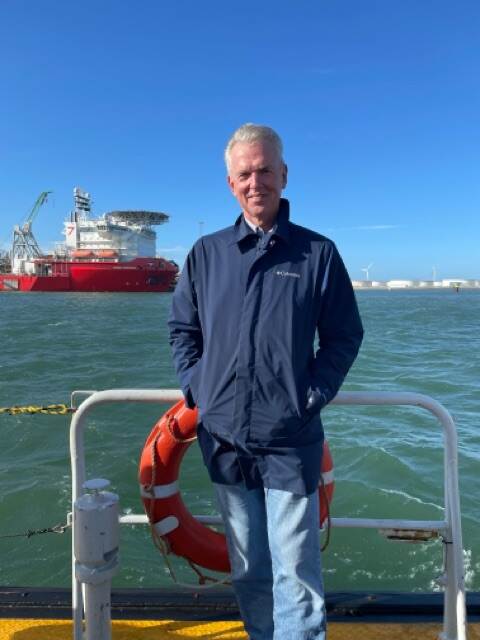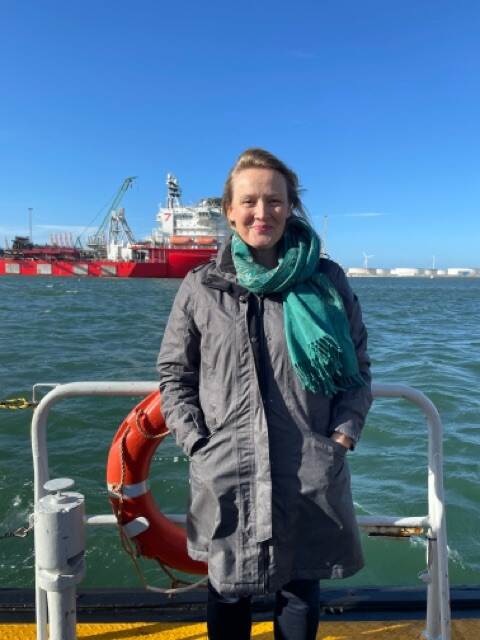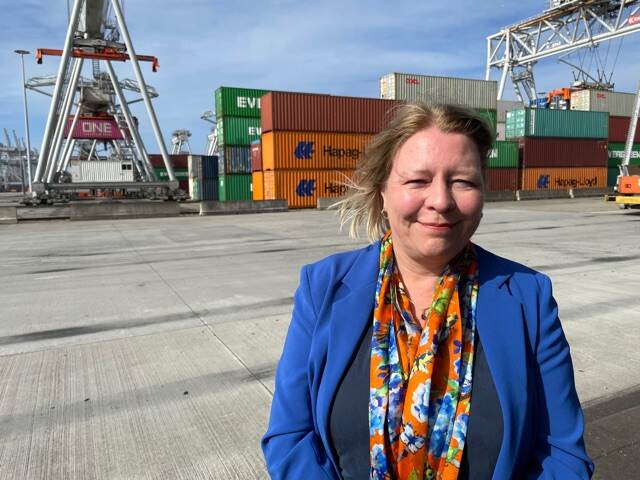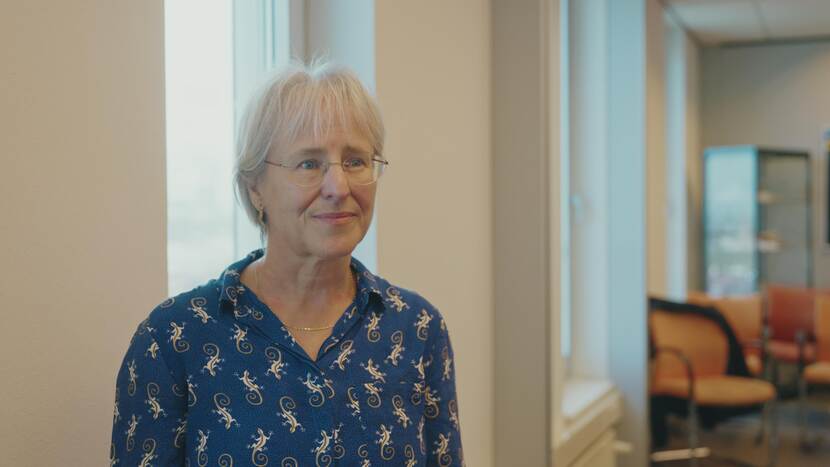Ambassadors to Latin America visit port of Rotterdam: ‘A major port of entry for goods – which unfortunately include cocaine’
Weblogs
Crime and subversion, and recently even a series of explosions are all examples of the serious problems associated with international drug trafficking. In many cases trafficking begins with shipments of drugs from South America to the port of Rotterdam. The Netherlands’ ambassadors to a few of the countries in the region paid a working visit to Rotterdam for a look behind the scenes at the port. To mark the International Day Against Drug Abuse and Illicit Trafficking, on June 26th, they shared what they saw.
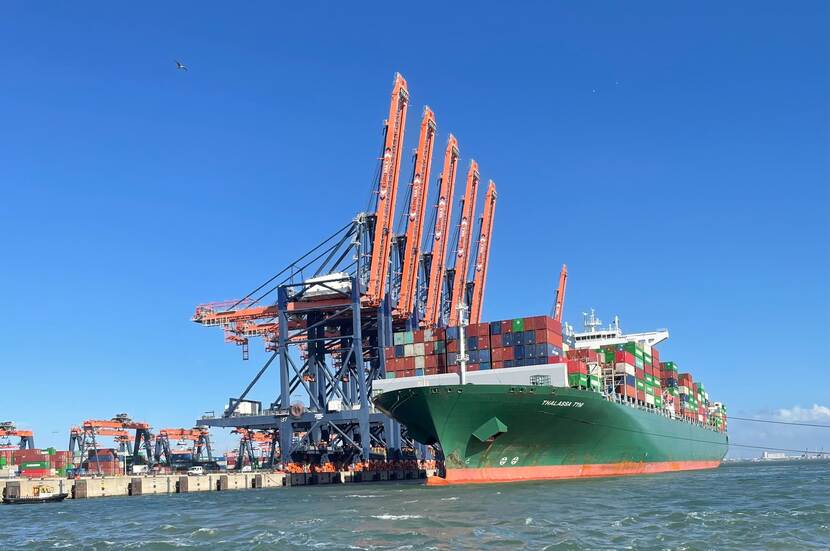
Drug trafficking is a major problem in Colombia, Argentina, Costa Rica, Peru, Suriname and Panama, as it is in the Netherlands. But the nature of the problem varies from country to country, say the ambassadors.
Ernst Noorman, ambassador to Colombia since 2020
Ernst Noorman deals a lot with international drug trafficking in his work in Bogota. ‘It’s obviously an ongoing issue in Colombia, but it’s also an area of focus in the relations between Colombia and the Netherlands. Some 60% of the world’s cocaine is produced in Colombia, and from there it is shipped to Europe via ports in Paraguay and Ecuador, for example,’ he says.
‘Rotterdam has the dubious honour of being Europe’s main port of entry for Colombian cocaine,’ he adds. There’s a reason for this: ‘It’s completely due to trade relations between our two countries. Rotterdam is the main port of entry for all Colombian products. Unfortunately, cocaine is one of those products.’
The ambassador knows from experience that both the Netherlands and Colombia are working hard to tackle drug trafficking. ‘We cooperate extremely closely. We have a number of Dutch police officers at the embassy who work together with their Colombian counterparts, mainly on combating undermining,’ he says. ‘We monitor each other’s policies and look at how we can help to ultimately reduce the risk of undermining due to cocaine trafficking between Colombia and the Netherlands.’
Ilse Smits, ambassador to Panama since 2019
‘For logistical reasons, Panama plays an important role in international trade – including the drug trade between South America and Europe,’ says Ilse Smits, the Netherlands’ ambassador to Panama. ‘It is a quintessential transit country. About 5% of all global trade is funnelled through the Panama Canal. That means there are also opportunities for people to shift illegal goods into Europe.’
Smits notes that Panama is aware of the scale of the problem. ‘Panama works hard to intercept shipments of drugs, and it confiscated 128,000 kilos of cocaine in 2022,’ she says. But it can’t solve the problem on its own, which means international public-private cooperation remains crucial. Smits gives an example. ‘Drug trafficking causes major problems for shipping companies, both at the European end and in Panama. Cargo security is threatened and shipping employees feel at risk too. Governments and businesses need to work together to reinforce the weaker links in the transport chain. The Netherlands and Panama signed a customs treaty last year for this specific purpose.’
Nathalie Lintvelt, ambassador to Peru since 2019
Ambassador Nathalie Lintvelt is stationed in Lima, Peru, from where she is also responsible for Ecuador and Bolivia. ‘Together with Colombia Peru is the region’s main producer of cocaine, and Ecuador is a major port of departure for shipping containers packed with drugs,’ she says.
Ms Lintvelt stresses the need for drug shipments from those countries to Europe (most often destined for the Netherlands and Belgium) to be seen as a shared problem. ‘The urgency can be felt on both ends, along with the understanding that we can only tackle it by working together.’
Both sides are actively seeking specific ways in which to cooperate. For instance, police representatives from Peru, Ecuador and Bolivia have been invited to visit Rotterdam. As Ms Lintvelt explains, ‘There’s so much that the ports in the countries I’m responsible for can learn from the Netherlands, and they are eager to do so. The foremost objective in this regard is to make the logistical chain less vulnerable.’
Henk van der Zwan, ambassador to Suriname since 2020
‘Suriname is closely connected to the Netherlands in many ways,’ says ambassador Henk van der Zwan. ‘Unfortunately, they’re sometimes also connected in ways we’d rather they not be,’ he adds, referring to the shipments of drugs that leave Paramaribo bound for Europe.
He is calling specifically for attention for this issue from Suriname. ‘Trafficking is a major problems here because it contributes to corruption. The police force, port authorities and customs service, for example, have all been infiltrated by criminals in the drug trade.’
The Netherlands is trying to help Suriname deal with this, says Mr Van der Zwan. ‘Suriname has previously deployed sniffer dogs trained in the Netherlands to detect drugs, and that worked. The dogs were used mainly to identify drug swallowers at airports. This smuggling method has now been more or less eliminated at Amsterdam Schiphol Airport, but what we’re seeing is that the problem has simply shifted elsewhere, to ports and countries around Suriname.’ He concludes, ‘This means you have to cover all the bases, and that’s why it’s so important that police and customs officials here receive good training.’
Christine Pirenne, ambassador to Costa Rica since 2020
As Christine Pirenne explains, ‘Here when it comes to drugs the main focus is on cooperation between the Netherlands and Costa Rica. Drug-related violence has increased significantly, with more people killed from it in 2022 than in many previous years, and the government is concerned. In part thanks to Costa Rica’s natural beauty and ecological diversity, people live by the philosophy of pura vida, or pure life. But that’s coming under pressure, as the government is well aware.’
Therefore, Costa Rica is interested to see how things are done at the port of Rotterdam. Ms Pirenne explains: ‘In 2022 the mayors of Rotterdam and Antwerp visited Costa Rica. Their visit drew a lot of attention and highlighted the need to improve security at ports. And early this year the president of Costa Rica visited Rotterdam to find out what that port was doing. Training and knowledge exchange were central aspects of both visits.’
The Netherlands contributes how it can from the embassy in San José. One concrete example in Costa Rica is training for sniffer dogs. ‘We will be providing 10 dogs,’ says Ms Pirenne. ‘The dogs and their Costa Rican handlers will be trained in Rotterdam and start working in the port of Moin by the end of this year. That may feel like a small step, but it is a tangible and important example of how countries can work together in international ports to help stop cocaine trafficking from Costa Rica to Europe.’
